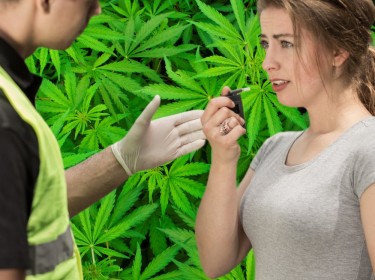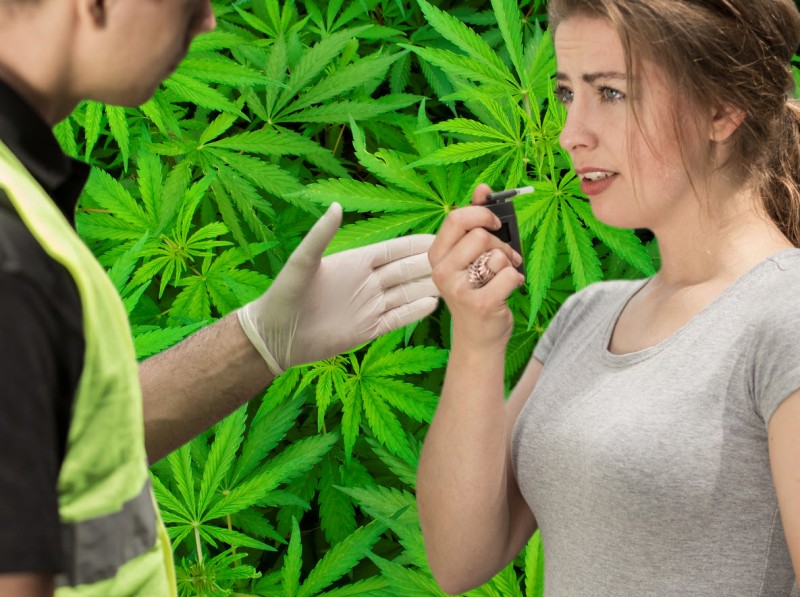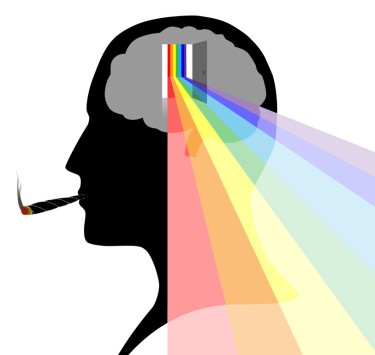
AI: The Solution To Failed Breathalyzers?
For far too long, companies and researchers have put in tons of time and money into developing roadside breathalyzers to detect stoned drivers.
With the rapid spread of cannabis legalization around the United States, transportation officials and health authorities have quickly seen the importance of developing technology that can tell if a driver is stoned or not.
It’s almost 2024, and truly reliable pot breathalyzers are nowhere in sight. Breathalyzers just don’t work – if they do, not as well – in detecting THC levels in the body of a driver the way that it detects alcohol. While the use of breathalyzers have been considered the gold standard for detecting alcohol consumption or usage, these systems can’t support the use of THC. Most traditional breathalyzers are made using fuel cell technology, which can gauge alcohol levels in one’s breath. It works simply by breathing on the fuel cell, which then produces electrical currents depending on how much alcohol one consumed. Brain scans may be used with AI in the future to determine if someone is "too high" to drive.
Fuel cell technology is effective and successful for alcohol detection even if it still has limitations. Breathalyzers have been around since 1954, but such a use for pot isn’t as simple.
There are many reasons why cannabis breathalyzers have failed, but it’s mostly because of the fact that marijuana can stay in human bodies for months at a time, when they are no longer high. So in essence, there’s no simple way to accurately gauge how stoned a person is at a moment.
However, it looks like artificial intelligence may have a chance to change all that.
A recent study conducted by researchers at the Stevens Institute of Technology analyzed smartphone data from both marijuana consumers and non-users. Marijuana users were asked to report each time they partook of weed, and how intoxicated they were using a scale of 1-10. In addition, the researchers compared more than 100 sensory data such as noise, location, and movement which was picked up by their mobile phones.
What they found was surprising: there is a stark contrast among the data between users and non-users. There were significant differences in the data between the two, especially when it comes to the time consumers reported they were stoned.
“Smartphones with mobile sensors are universal and can track our behavior in an unobtrusive way,” explains Sang Won Bae, lead researcher and an assistant professor at the Stevens Institute of Technology. “They are not a distraction, you don’t have to wear them, and the data they collect can potentially prevent poor decision-making when under the influence,” he adds.
According to the researchers, using AI has the chance of predicting how stoned a person is with 90% accuracy as long as it follows training from smartphone data. This technology has already been used to gauge impairment from other drugs as well as alcohol.
“It’s important to give people the chance to change their behavior before something negative happens,” says Bae. “This study aims to predict human behavior as a way to support people while physically or cognitively impaired.”
The AI technology, called Light Gradient Boosting Machine, increased accuracy from 67% to 90% when researchers added in data such as the time of day, and day of the week. If relying on time factors only, the learning model can predict impairment with 60% accuracy.
“We tested the importance of time features (i.e. day of the week, time of day) relative to smartphone sensor data only on model performance, since time features alone might predict ‘routines’ in cannabis intoxication,” reads the study.
“This exploratory study demonstrated the feasibility of using smartphone sensor data to detect subjective cannabis intoxication in the natural environment among young adults,” the study says. “Smartphone sensor data contributed unique information, over and above time features, to detect subjective cannabis intoxication.”
Artificial intelligence is proving to be more promising for the cannabis industry each day – especially when it comes to measuring impairment. There are other companies that are experimenting on this, such as Predictmedix AI, a Toronto-based health firm that has developed technology merging machine learning, sensor technology, and computer vision with artificial intelligence.
A hallmark feature of their AI technology is its ability to detect impairment using delicate algorithms that involve scanning a person’s behavior and appearance, looking for even the most restrained cues – within 30 seconds.
Why Is It Dangerous To Drive Stoned?
Cannabis legalization isn’t going to slow down anytime soon. The research proving just how valuable cannabis is therapeutically and medically continues to grow, and it’s helping millions of people live a life free of chronic pain, depression, anxiety, old-age conditions, epilepsy, and so much more!
On top of that, pot has proven to be a terrific substitute for alcohol. It’s much safer and healthier, so it’s no surprise why more people have taken up the habit of smoking weed instead of getting high.
However, one area where neither drinking nor smoking pot is safe is in the department of driving. Whether you operate machinery or need to drive to and from work and other locations, driving while stoned is not recommended.
Yes there are a lot of seasoned stoners who can drive safely – but given the sheer volume of new cannabis users out there, it is just doesn’t make sense to risk your life and the safety of others on the road by driving stoned. That’s why cannabis-legal states have had to look out for impairment tests for weed too.






